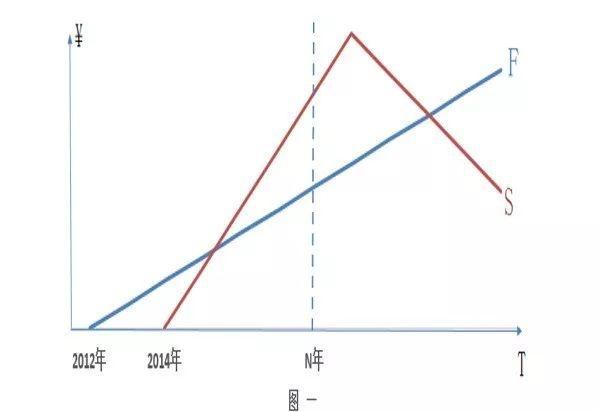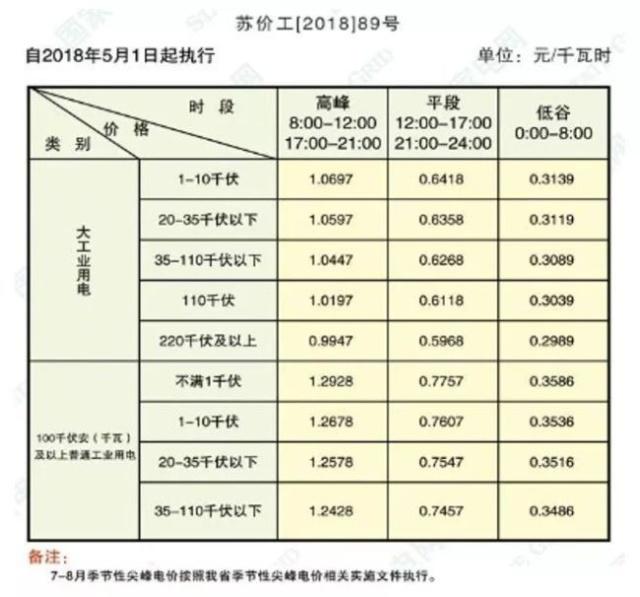Under the background of “de-leverage, subsidy and deflationâ€, the subsidy of subsidies for photovoltaic power plants and the freezing of new-scale indicators have invalidated the traditional development model of “incremental storage†in China's photovoltaic industry. Where does the photovoltaic economy go?
Only by recognizing the situation, facing difficulties, and revitalizing the situation, fully exploiting the unique economic value of photovoltaic energy as renewable energy and green power, releasing the dividend of the photovoltaic economy and sharing it with the whole people, can make the future of this industry more exciting.
It is difficult to become just-needed energy in the short term
From the perspective of traditional energy sources, photovoltaic power generation has its own distinctive features, its advantages are more prominent, and its disadvantages are equally obvious.
The advantage is that the resources are endless, widely distributed, and can be moved synchronously with the energy-using terminal, and the installed capacity of the system can be large or small and arbitrary. The disadvantage is that relying on the weather and low energy density, the competitiveness in the existing energy system is weak.
Due to the instability and uncontrollability of lighting resources, photovoltaic power generation has seasonal, regional and intermittent characteristics. Its power production has obvious volatility and random characteristics. In extreme weather such as floods, droughts and hail, There is also a risk of no revenue.
At the same time, compared with thermal power, hydropower, nuclear power and even wind power, the unit-scale output of photovoltaic power generation is relatively weak. The characteristics of low energy density determine that its scale benefits require intensive capital and land space as support, and will be received from land and environment. Deep constraints on space, consumption, and so on.
Coupled with the high cost, the competitiveness of photovoltaic power generation is obviously weak. In the short term, it is difficult to become a just-needed energy source for people's livelihood like thermal power and gasoline.
Reproduction of light applications,
Industrial value curve is seriously distorted
In the past few years, the photovoltaic industry has been in a mess, but in the development driven by the supply side, the capacity investment and installed capacity have been rushing all the way, and the key issues affecting the return on investment of subsidies such as subsidies and power cuts have been repeatedly ignored.
Before 2013, China's PV industry was a typical “two-headedâ€. The source of raw materials and the digestion of production capacity were almost entirely dependent on foreign markets. Therefore, the entire industry was defeated by the “double-reverse†of Europe and the United States.
However, after 2013, it went to the other extreme under the strategy of localization and domestic demand. The entire industrial chain was basically self-produced and sold for its own use. The domestic production capacity and installed capacity quickly exceeded the planned line, resulting in serious subsidies, and the decision-making layer had to suppress it. Domestic demand has led to misery in and out of the industry.
From the data point of view, although the "531" policy has frozen the strict control of the installed indicators, in fact, the installed growth is still strong.
The data shows that in the first nine months of 2018, domestic PV installed capacity was 34.5GW; polysilicon production was 178,400 tons, up 4.94% year-on-year; wafer production was about 63.3GW, up 2.1% year-on-year; cell production was about 53.6GW, up year-on-year. 5.1%; component production was 54.9GW, an increase of approximately 3.58%.
However, it does not match the large-scale installation. Due to the outstanding problem of limited power limitation, the utilization rate of many photovoltaic power plant equipment is seriously insufficient for many years, resulting in great investment waste.
Not only that, but the utilization rate of its transmission and distribution equipment is also extremely low.
Compared with other energy generation modes (except wind power), it can be produced 24 hours a day, 7 days a week. According to the current average power generation hours of centralized power stations is less than 1400 hours, that is, 4 hours per day, the utilization of transmission and distribution equipment by photovoltaic power stations. The rate is only 16.7%, and its transmission and distribution assets are idle for about 83.3% of the time each year, causing great waste.
Energy consumption upgrades are lagging behind,
Restricting the rise of the photovoltaic economy
In terms of volume, the photovoltaic economy has a small proportion in the entire national economy, and its position on the energy map is weak, and its actual influence is far less than the industrial reputation.
In listed companies, the overall strength of PV companies is far less than that of petrochemical energy companies; in social life, the coupling between PV and people's livelihood is much smaller than that of petrochemical energy; in the total power generation of the whole society, the proportion of photovoltaic power generation is even Can be ignored. In 2017, the national photovoltaic power generation capacity was 118.20 billion kWh, which was less than 1.82% compared with the national power generation capacity of 6.5 trillion kWh.
Even so, with the promotion of government-led and strong subsidy policies, as China's energy transformation process continues to accelerate, the scale of production and installed capacity of the photovoltaic industry have quickly become global leaders, and the rise of the industry is an indisputable fact.
On the other hand, due to the lack of consensus on the environmental cost of energy production, the green energy value of photovoltaic power has been avoided. The green energy of “low environmental cost†and the “high environmental cost†of petrochemical energy and electricity form price upside down, green power The market players are not only not rewarded in terms of material, but also in the spiritual level, resulting in the end-use energy consumption still dominated by traditional petrochemical energy.
For example, the grid company, as the largest recipient of photovoltaic energy, has access to the world's largest dispersed, intermittent new energy source, but has not obtained a positive evaluation that matches this, not only does it not get better economic benefits, but instead It also cost a lot of manpower and material resources, and even the result of losing money and losing money was not obtained.
The lag of the consumer incentive mechanism has severely restricted the development of green energy including photovoltaic power generation, and the transformation of energy consumption incentive mechanism is imminent.
Recently, the macro-financial situation is relatively severe. In the context of poor financing channels and long-term subsidies, as a capital-intensive photovoltaic power plant asset, it is difficult to generate positive cash flow by relying solely on the desulfurization coal price. The risk of imbalances in payments and depletion of liquidity is high.
Once the export is blocked, or the subsidy is abolished, the photovoltaic economy is likely to respond downwards, and even weaken from it, and the shortcomings of the basic scientific research and application innovation lag, low-end production capacity clearing, etc., will be nowhere in sight.
Compared with petrochemical energy, the market competitiveness of photovoltaic power generation as a clean energy source in the existing energy system is obviously weak, and its sustainable development is restricted by multiple factors such as policies, markets, land and subsidies, and the implementation of support policies in the previous period is not thorough. Due to serious subsidies and arrears, the technology upgrade in the industry is not as good as expected, and the market-oriented development model is still being explored.
In the short run, it is still more difficult for the industry to achieve market-oriented cycle development, and it still needs a certain degree of support from the policy.
Policy dual track leads to separation of supply and demand
From the actual situation, the industrial policy has obviously lagged behind the development of the industry, and the market means and planned interventions are not coordinated enough, resulting in the photovoltaic economy value being eroded by multiple.
(1) Front-end market economy, back-end planned economy, lack of user-side power
At present, all the links in the entire PV industry chain before the PV power plant is put into production have been marketized, such as the production and sales of silicon materials, batteries, components, the procurement of electrical equipment materials, the design and construction of power stations, etc., completely said by the market. count.
However, the sales volume and selling price of the products after the power station is put into production are still approved by the government. The supply and demand sides can only be passively executed, and there is no right to negotiate freely. Therefore, it is straightforward to say that both the supply and demand sides can only achieve maximum benefits by simply contacting the administrative agencies.
(2) Supporting policies have entered the turning point ahead of time, and the subsidy gap has not been resolved.
In 2013, in response to external market "dual" passive situation, the Chinese government launched a subsidy of electricity industry support mode. This model has the following characteristics:
1 The subsidy is linked to the renewable energy fund, which solves the problem of the source of money without increasing the financial burden;
2 The fund is caught in the electricity bill (the electricity consumption is increasing year by year and the source of funds is guaranteed), and the grid company is levied by the government to endorse the subsidy source;
3 After the power station is built, it will be connected to the grid and the power generation will be forcibly sold to the grid company according to the specified electricity price;
4 The subsidy has been for 20 consecutive years, the income is guaranteed, and the power station assets are mortgaged, and the financial institutions do not see any risks;
5 Subsidies are distributed by the National Energy Administration, the Ministry of Finance, and the power grid companies.
This system design, can be said to be perfect. Practice has proved that the system to be effective, not only for five consecutive years to make China the world's leading PV installed capacity growth, but also to the Chinese PV manufacturing sector is still able to grow at a rapid containment and European markets, and forced European and American counterparts went bankrupt.
However, any industrial policy has an inflection point. Once the inflection point appears, it is likely that negative incentives will occur.


The author believes that the inflection point of the current PV industry support policy can be seen from the functional relationship between the annual total renewable energy collection (photovoltaic part) and the annual total PV subsidy. The results may be extensive growth. Three trends, such as extreme growth and high value-added.
As for the Ground Screw installation machines, we have mainly two types - Electric Screw driver and Screw Pile Machine.
Screw pile machine is a new type of simple drilling equipment with independent innovation, ideal for pile construction in solar panels, billboards, street lamp, fences, flagpoles, traffic signs, isolation net and simple houses, giving strong stratum adaptability and high efficiency.
The rig is equipped with a large torque rotary head for strong power, which provides strong adaptability in stratum.
The hydraulic system adjusts rotation and feed to the stratum conditions accurately, which ensures high drilling efficiency.
The rig is equipped with a pile guide device to guarantee pile verticality and quality.
The rig can be equipped with various pile connecting devices according to the pile structure and size, which makes piles insertion flexible and efficient.
In different stratum condition, the rig can be equipped with down-the-hole percussion, cutting, short spiral and other tools to achieve full stratum drilling.
Screw Pile Machine
Screw Pile Machine,Helical Pile Machine,Helical Pile Driver,Helical Pile Installation Equipment,Ground Screw Machine
Hebei Honde Plastic & Metal Co., Ltd. , https://www.foundation-system.com